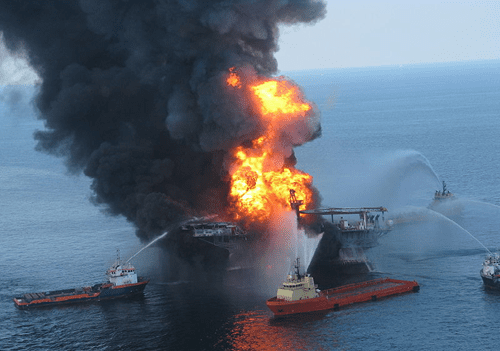Overview
Macondo Blow Out
On the 20th of April 2010 the drilling rig Deepwater Horizon exploded while drilling in the Macondo oil field Mississippi Canyon Block 252 in the Gulf of Mexico. Two days later the rig sank in approximately 5000 feet of water, by Saturday the 24th of April an oil leak was reported near the sunken oil rig and over the coming months this became the largest oil spill in US history.
While all of the resources and options were being gathered, the US Coast Guard announced that they would conduct a test using fire resistant boom to see if the oil floating on the sea surface could be burned. The test using Hydro Fire Boom was a success and the Coast Guard then authorised controlled burning as a response tool.
Our Work
Elastec American Marine manufactures hydro Fire Boom and in the years prior to the Macondo incident eight complete fire-boom systems were sold to Brazil and put under the operational management of Alpina Briggs one of the Briggs joint ventures. Elastec realising that not many people outside their company had experience with this type of boom contacted Briggs and requested Captain Bill Boyle to join their operational response team in the Gulf of Mexico as In-Situ Burn Coordinator as he had gained a lot of experience with this type of equipment during his time in Brazil as Operations Director.
Captain Boyle, BMES Divisional Marine Operations Manager joined the Elastec team in the Gulf of Mexico and immediately started to identify suitable vessels that could be used to tow fire boom.
When training was complete to the satisfaction of the Coast Guard, the fire-booms were loaded onboard dive support vessels that had been identified as deployment parent vessels. Each team of 6 pairs of shrimp boats had one parent vessel that not only carried fire booms and spare equipment but also had onboard, Surveyors to track and log each fire, Trained Medics in-case of accident or illness and Safety Officers to monitor all aspects of the in-situ burning operation including air monitoring.
Result
During a period of eight weeks over 400 burns were recorded burning an estimated 300,000 barrels of oil near to the source of the spill. This type of oil spill response has now been identified as an alternative oil spill response tool.
Quick Facts
- LocationGulf Of Mexico
- ClientElastec American Marine
- DateApril 2010 – July 2010

